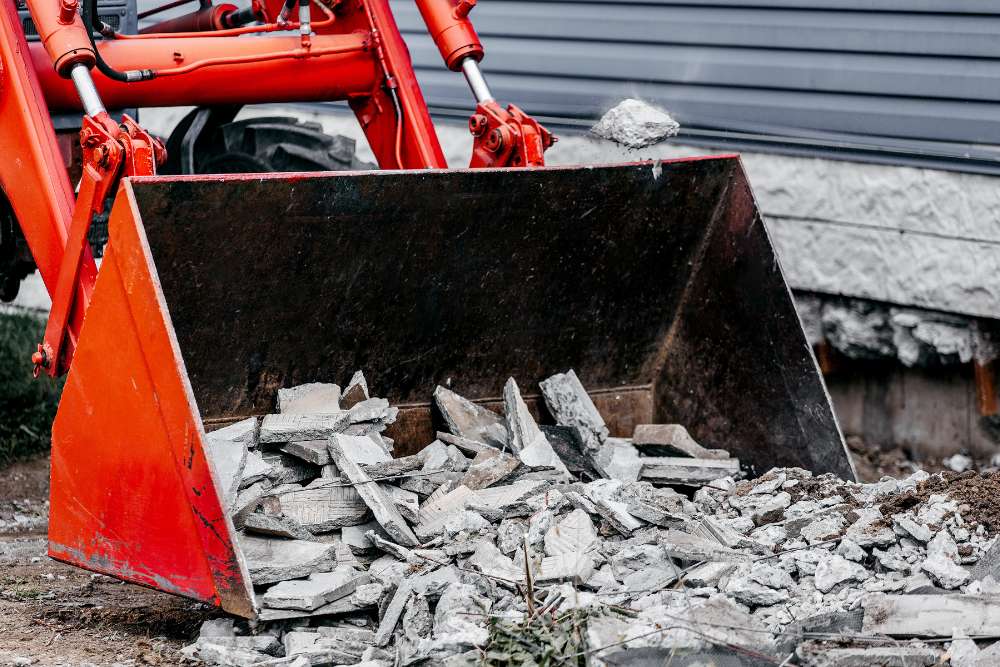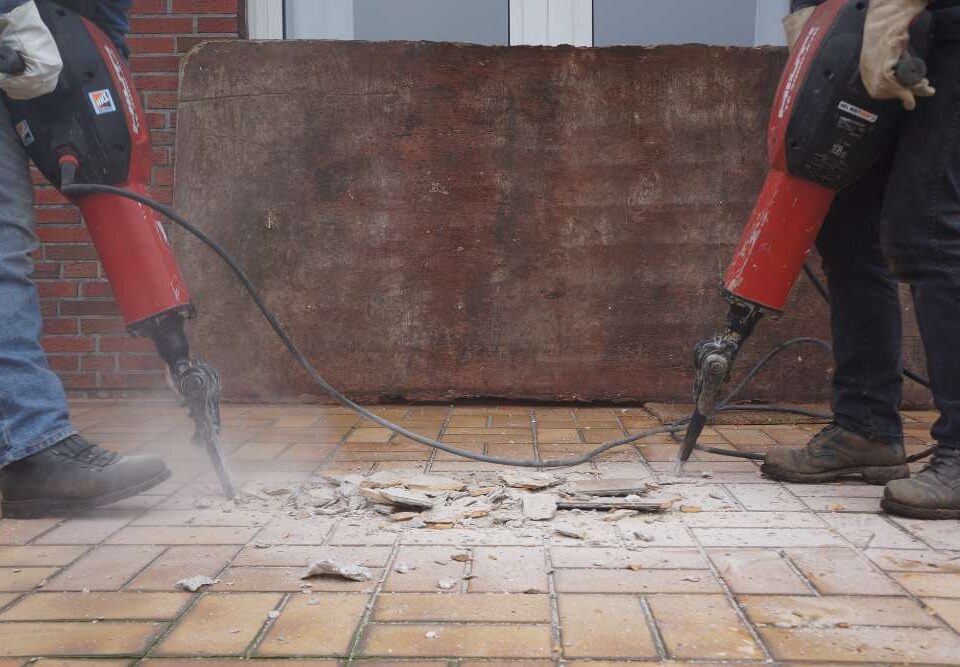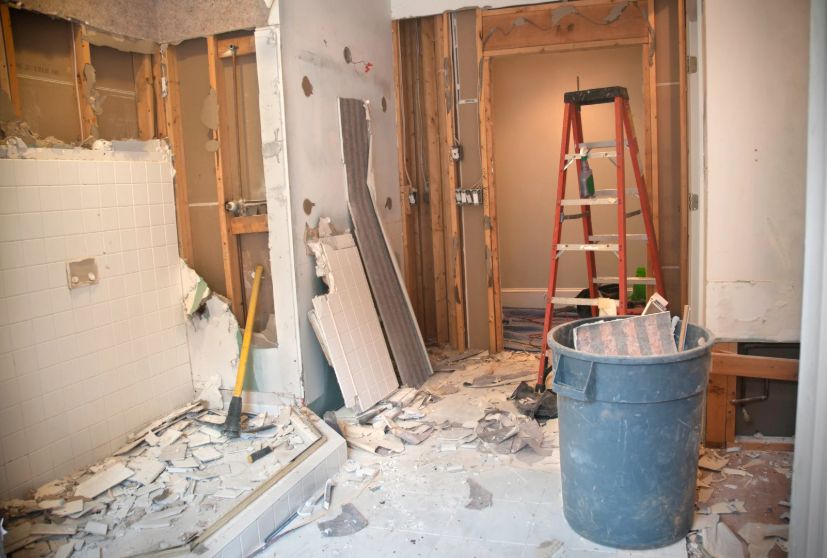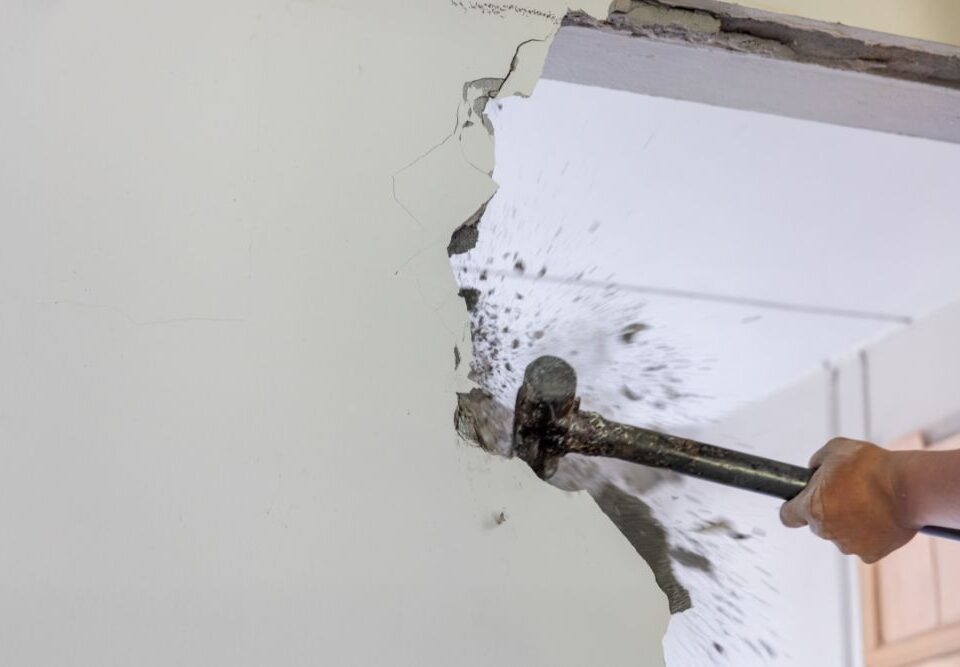
How to Maximize Efficiency During Playset Removal
September 5, 2025
How Bathroom Demolition Affects Your Home’s Renovation
September 5, 2025What to Do with Concrete Debris After Removal
Finding Responsible Disposal Options
Once concrete is removed, deciding where it goes can feel overwhelming. Dumping it haphazardly can harm the environment and violate local regulations. Many communities offer recycling centers specifically for construction debris, where concrete can be repurposed into gravel or new building materials. Seeking out these facilities not only ensures legal compliance but also reduces landfill waste, giving old concrete a second life. Homeowners or contractors can also consider municipal transfer stations that accept construction materials, providing an organized and eco-friendly outlet for the debris. Planning ahead and knowing the rules of your area saves both time and potential fines. Responsible disposal transforms what might seem like a waste problem into an opportunity to support sustainable building practices.
Sometimes, smaller pieces of concrete can be creatively reused at home. They can be crushed for pathways, garden edging, or drainage solutions. Landscaping projects often benefit from broken concrete as a base for patios or driveways, where its weight and durability provide long-lasting stability. By reimagining concrete debris as a resource rather than trash, you not only save money on new materials but also contribute to eco-conscious practices. With careful sorting and handling, concrete removal becomes less of a chore and more of an environmentally aware project that leaves both your property and conscience in better shape.
Renting a Construction Dumpster
Handling concrete debris is often easier with the right equipment. Renting a construction dumpster allows you to consolidate all materials into one manageable location. This approach minimizes multiple trips to disposal sites and reduces the risk of leaving debris scattered around your property. Many rental companies provide guidance on what can and cannot be included, ensuring you stay compliant with local waste management rules. By clearly separating recyclable concrete from other materials, you streamline both the disposal and potential recycling processes, saving effort and cost. Using a dumpster also keeps your site safer, reducing tripping hazards and making cleanup more efficient.
A dumpster rental offers flexibility in timing as well. Some projects take longer than expected, and having a dedicated container on-site allows you to work at your own pace without worrying about overflowing piles of debris. With a professional rental, you can schedule pickup when the project concludes, ensuring all concrete is removed responsibly. Additionally, these companies often have the necessary permits for disposal, sparing you administrative headaches. This solution creates a seamless workflow where debris is contained, safety is maintained, and the environment benefits from proper disposal or recycling channels, making concrete removal smoother and less stressful.

Donating Concrete to Local Projects
Concrete may appear unusable, yet local organizations or community projects often welcome donations. Nonprofits, schools, or public works departments sometimes repurpose concrete for playground bases, garden paths, or erosion control. By connecting with these groups, homeowners can ensure their debris benefits the wider community rather than filling landfill space. Before donating, confirm the concrete is free from contaminants like metal rebar or chemical residues. Donations typically require coordination, but they provide a socially responsible alternative to disposal, allowing debris to contribute positively to civic projects.
Repurposing concrete through donation extends its lifecycle in practical ways. Community gardens, landscaping initiatives, or infrastructure repairs can all make use of crushed concrete. In some areas, construction supply stores accept concrete donations for resale or redistribution to builders seeking affordable materials. Engaging with these programs fosters relationships with local organizations and supports sustainability. Even if only a portion of your debris can be reused, the impact on landfill reduction is significant. Exploring these channels makes the process of handling concrete debris more than a logistical necessity; it becomes a small but meaningful contribution to the community.
Reusing Concrete in Landscaping Projects
Landscaping presents a creative avenue for concrete reuse. Broken concrete chunks can be transformed into decorative garden features, retaining walls, or stepping stones. By integrating these pieces thoughtfully, you achieve both aesthetic and functional results. Concrete’s durability makes it suitable for areas exposed to weather or foot traffic. When designing your project, consider color, texture, and size variations to add visual interest. Incorporating debris in this way reduces the need for purchasing new materials while maintaining structural integrity in your outdoor spaces.
Using concrete in landscaping also offers practical advantages. Crushed concrete can improve drainage, prevent soil erosion, and create stable pathways through gardens or yards. Edging beds or building terraces from leftover concrete adds both charm and durability. Homeowners can mix creativity with utility, turning what might have been waste into lasting outdoor features. This approach emphasizes resourcefulness and sustainability, proving that even discarded construction materials have valuable applications in enhancing home environments and minimizing environmental impact.
Crushing Concrete for Road Base or Driveways
Concrete can be crushed and repurposed as a sub-base for roads or driveways. This process involves breaking larger chunks into smaller aggregate, which provides a stable foundation for new construction projects. Contractors and DIY enthusiasts alike use crushed concrete to replace gravel or sand, reducing the need to extract new materials. This method not only saves resources but also diverts concrete from landfills. The resulting aggregate is strong, compactable, and ideal for supporting heavy loads, making it a practical and eco-conscious solution for various construction needs.
Preparing concrete for such applications requires careful attention to size and cleanliness. Removing metal, plastics, or other contaminants ensures the crushed product is suitable for structural purposes. Once processed, the material can be spread and compacted as a base layer, offering durability and longevity. Utilizing debris in this manner demonstrates a commitment to sustainable building practices and efficient resource management. By rethinking concrete as a reusable material, both environmental and economic benefits are achieved, turning leftover debris into a valuable asset for future projects.
Working with Professional Junk Removal Services
Engaging a professional junk removal service simplifies concrete disposal. These experts have the experience, equipment, and permits necessary to remove debris safely and efficiently. They can handle large volumes, navigate local regulations, and ensure materials are delivered to appropriate recycling or disposal facilities. By outsourcing this task, property owners reduce physical strain and risk of injury associated with moving heavy concrete. Professionals also provide guidance on separating recyclable materials from general waste, maximizing both environmental responsibility and cost-effectiveness.
A professional service ensures compliance with all local rules and safety standards. Their teams are trained to manage sharp edges, dust, and heavy lifting, preventing accidents that might occur if handled without expertise. Additionally, services often include on-site cleanup, leaving the property ready for the next stage of construction or landscaping. Relying on experts transforms a potentially stressful chore into a streamlined process. With the combination of knowledge, equipment, and efficiency, professional junk removal offers peace of mind and ensures that concrete debris is responsibly managed from start to finish.
Incorporating Concrete in Creative DIY Projects
Concrete debris can inspire a range of DIY projects. Small chunks can become planters, garden stepping stones, or decorative sculptures. Creative painting or etching adds personal flair, transforming leftover material into functional art. Such projects allow homeowners to channel resources that might otherwise be discarded into meaningful and sustainable expressions. The physical properties of concrete make it a versatile medium, capable of supporting weight and withstanding outdoor conditions, while also offering opportunities for inventive applications around the home.
DIY projects also enhance learning and family engagement. Children can participate in safe, supervised creative activities using small concrete pieces, fostering interest in construction, design, and environmental stewardship. By incorporating concrete into personalized projects, homeowners turn debris into something practical, beautiful, and memorable. These initiatives not only reduce waste but also cultivate a sense of accomplishment and creativity, proving that even discarded construction materials can have a lasting impact when approached thoughtfully.
Composting or Using Concrete for Soil Stabilization
Surprisingly, concrete can serve soil stabilization purposes. Crushed concrete improves drainage, prevents erosion, and strengthens soil structures in garden beds or slopes. By distributing broken pieces strategically, homeowners enhance plant growth and prevent sediment displacement. While not compost in the traditional sense, integrating concrete into landscaping supports soil integrity and reduces runoff, offering functional benefits for both natural and built environments. This approach aligns with sustainable gardening practices and provides a second life to materials that might otherwise contribute to landfill waste.
Applying concrete in soil stabilization requires planning to avoid damaging plant roots or altering soil chemistry negatively. By placing larger pieces as a base and finer crushed material as a top layer, the soil gains structure while maintaining permeability. Over time, this practice enhances long-term garden health and reduces maintenance requirements. By rethinking the purpose of removed concrete, homeowners convert potential waste into an asset that improves environmental resilience and supports practical land management, reinforcing the value of resourceful debris reuse.
Selling or Giving Away Concrete to Others
Concrete may hold value for other builders or hobbyists. By advertising leftover pieces online or within local construction networks, property owners can find interested parties eager to repurpose the material. Platforms for selling or giving away concrete encourage community sharing and reduce unnecessary disposal. Even small fragments can be useful for smaller projects, from garden landscaping to reinforcing other construction undertakings. Connecting with others ensures material is reused effectively, extending its functional lifespan beyond the original project.
Engaging in local exchange or resale programs also fosters neighborhood cooperation and reduces environmental impact. This method highlights how shared resources benefit more than one property and minimize collective waste. With careful communication regarding quantity, quality, and safety, concrete can find a second home where it contributes meaningfully to new projects. By exploring these avenues, homeowners maximize the utility of their debris and participate in sustainable building practices that enrich both the environment and community.
Keeping Safety and Local Regulations in Mind
Disposing of concrete debris requires awareness of safety practices and local regulations. Improper handling can result in injury from heavy materials, sharp edges, or dust inhalation. Protective equipment, proper lifting techniques, and a clean workspace minimize risk. Furthermore, understanding local disposal requirements avoids fines or illegal dumping issues. Municipal codes often dictate what types of construction debris are acceptable and the proper channels for recycling or landfill disposal. Adhering to these guidelines ensures a smooth and lawful cleanup process.
Planning the disposal process with safety in mind also enhances efficiency. Clearing debris systematically, labeling recyclable versus non-recyclable concrete, and maintaining a hazard-free site reduces accidents and stress. Consulting local authorities or waste management services before starting ensures compliance and may reveal unexpected opportunities for recycling or donation. By combining safety, legality, and creativity in debris handling, homeowners convert a potentially tedious task into a responsible, well-managed project, benefiting both people and the environment.
Conclusion
Handling concrete debris responsibly requires both planning and insight into disposal and reuse opportunities. Utilizing recycling centers, construction dumpsters, donations, or creative projects transforms what seems like waste into valuable resources. Homeowners can integrate debris into landscaping, DIY projects, or even structural bases, demonstrating that concrete retains usefulness beyond its original purpose. Each method has its unique benefits, from supporting community initiatives to enhancing sustainability and reducing landfill contributions. Thoughtful management ensures that projects remain efficient while respecting environmental and local regulations. These strategies make concrete removal less daunting, more productive, and environmentally conscious, turning a logistical challenge into an opportunity for positive impact.
For professional assistance, North Bay Junk Removal in Santa Rosa, CA provides comprehensive services that include safe and efficient handling of construction debris, including concrete. Their experienced team ensures compliance with local disposal regulations and maximizes recycling opportunities. Whether dealing with large volumes from a renovation or small home projects, they offer tailored solutions that simplify cleanup. Homeowners and contractors can contact North Bay Junk Removal at 707-478-6817 to schedule services and take the stress out of managing concrete debris. Trusting experts for junk removal ensures safety, legality, and environmental responsibility while reclaiming space efficiently.




